Tesla Motors Business Strategy
Tesla Motors, founded by Elon Musk in 2003, has quickly become a major player in the electric vehicle market. The company’s innovative business strategy sets it apart from traditional automakers and has helped propel its success. In this article, we will explore some key aspects of Tesla’s business strategy and how it has contributed to their rapid growth.
Key Takeaways
- Tesla’s unique business strategy has contributed to its success in the electric vehicle market.
- Focus on technology innovation and vertical integration sets Tesla apart.
- The Gigafactory is a key component of Tesla’s strategy, allowing for increased production capacity.
- Tesla’s direct sales model and customer engagement create a differentiated experience.
- The Supercharger network provides Tesla owners with convenient charging options.
One aspect of Tesla’s business strategy that sets it apart is its focus on technology innovation and vertical integration. Unlike traditional automakers, Tesla designs and manufactures its own electric vehicle components, such as batteries and electric drivetrains. By controlling the entire production process, Tesla can ensure quality and optimize performance. This approach has given Tesla a competitive advantage in terms of range, power, and efficiency.
Additionally, Tesla’s emphasis on vertical integration allows for faster innovation and the ability to quickly adapt to market demands. This strategy has enabled Tesla to stay ahead of its competitors and continuously improve its products.
| Year | Tesla Vehicle Production |
|---|---|
| 2015 | 50,580 |
| 2016 | 84,000 |
| 2017 | 101,312 |
A key component of Tesla’s business strategy is the Gigafactory. This massive battery manufacturing facility provides Tesla with the necessary production capacity to meet the growing demand for electric vehicles. By producing its own batteries at scale, Tesla can reduce costs and achieve economies of scale. The Gigafactory also allows Tesla to have greater control over its supply chain and reduce reliance on external suppliers.
| Model | Range | 0-60 mph |
|---|---|---|
| Model S | 412 miles | 2.3 seconds |
| Model 3 | 353 miles | 3.1 seconds |
| Model X | 371 miles | 2.5 seconds |
Tesla’s direct sales model and customer engagement are another key component of its business strategy. Unlike traditional automakers that rely on third-party dealerships, Tesla sells its vehicles directly to consumers. This allows Tesla to have more control over the sales process and provide a seamless customer experience. Tesla also prioritizes customer engagement, offering test drives, personalized vehicle configurations, and exceptional customer support.
One interesting fact is that Tesla’s Supercharger network provides Tesla owners with convenient charging options, enabling long-distance travel and reducing range anxiety. The Supercharger network, which consists of fast-charging stations strategically located across the country, allows Tesla owners to charge their vehicles quickly and conveniently. This infrastructure not only supports Tesla’s customer base but also promotes the adoption of electric vehicles on a larger scale.
Conclusion
Tesla’s innovative business strategy, focusing on technology innovation, vertical integration, and direct sales, has propelled the company to the forefront of the electric vehicle market. By challenging traditional automotive industry norms, Tesla has been able to create a unique customer experience and achieve rapid growth. As the company continues to expand its product lineup and invest in infrastructure, it is poised to further disrupt the automotive industry.

Common Misconceptions
Tesla Motors Business Strategy
There are several misconceptions surrounding Tesla Motors and its business strategy. It is important to separate fact from fiction to gain a better understanding of the company’s approach to the automotive industry.
- Tesla Motors only produces luxury electric vehicles.
- Tesla’s business strategy is solely focused on selling cars.
- Tesla’s success is reliant on government subsidies.
Firstly, it is commonly believed that Tesla Motors only produces luxury electric vehicles. While it is true that Tesla’s early models, such as the Roadster and Model S, were positioned as luxury cars, the company has actively worked towards producing more affordable models. The introduction of the Model 3, designed for mass-market appeal, demonstrates Tesla’s commitment to making electric vehicles more accessible to a wider audience.
- Tesla is expanding its product line to include more affordable options.
- The company aims to make electric vehicles a mainstream choice for consumers.
- Tesla’s long-term strategy is to penetrate various market segments globally.
Secondly, it is often assumed that Tesla’s business strategy is solely focused on selling cars. While car sales form a significant part of their revenue, Tesla’s approach extends beyond vehicle sales. The company also places emphasis on renewable energy solutions, including manufacturing solar panels and energy storage products. Tesla’s SolarCity acquisition and the development of the Powerwall highlight the company’s broader vision of sustainable energy and transportation solutions.
- Tesla’s business strategy encompasses renewable energy solutions.
- The company aims to become a comprehensive sustainable energy provider.
- Tesla’s focus extends beyond cars to include energy storage and solar technology.
Lastly, it is frequently misunderstood that Tesla’s success is reliant on government subsidies. While it is true that government incentives have played a role in aiding electric vehicle adoption, reducing the cost of ownership, and supporting Tesla’s growth, the company’s achievements can be attributed to more than just subsidies. Tesla’s commitment to innovation, high-quality products, and a strong brand image have garnered significant customer demand, contributing to its success in the market.
- Tesla’s success is driven by customer demand and product excellence.
- The company has a strong brand image and reputation for innovation.
- Tesla’s ability to disrupt the automotive industry goes beyond government support.
In conclusion, it is essential to debunk common misconceptions surrounding Tesla Motors and its business strategy. Tesla’s commitment to producing more affordable electric vehicles, its broader focus on renewable energy solutions, and its success driven by customer demand and product excellence demonstrate the company’s multi-faceted approach to transforming the automotive industry.

Tesla Model Sales by Year
Tesla Motors has experienced significant growth in vehicle sales over the years. This table illustrates the number of units sold by Tesla for each model year.
| Model Year | Number of Model S Sold | Number of Model 3 Sold | Number of Model X Sold | Number of Model Y Sold |
|---|---|---|---|---|
| 2012 | 2,650 | – | – | – |
| 2013 | 22,477 | – | – | – |
| 2014 | 31,655 | – | – | – |
| 2015 | 50,366 | – | – | – |
| 2016 | 76,230 | – | – | – |
| 2017 | 47,532 | – | – | – |
| 2018 | – | 146,055 | 13,100 | – |
| 2019 | – | 223,667 | – | – |
| 2020 | – | 365,240 | – | 26,475 |
| 2021 | – | 353,454 | – | 193,883 |
Tesla Battery Production by Year
As a key factor in the success of electric vehicles, Tesla’s battery production has seen remarkable growth. The table below presents the number of batteries produced by Tesla for each year.
| Year | Number of Batteries Produced |
|---|---|
| 2012 | 4,000 |
| 2013 | 10,000 |
| 2014 | 20,000 |
| 2015 | 35,000 |
| 2016 | 54,000 |
| 2017 | 97,000 |
| 2018 | 195,000 |
| 2019 | 366,000 |
| 2020 | 435,000 |
| 2021 | 614,000 |
Tesla Charging Stations Worldwide
Tesla’s commitment to building a robust charging infrastructure is evident in the increasing number of Supercharger stations worldwide.
| Year | Number of Supercharger Stations | Number of Destination Chargers |
|---|---|---|
| 2012 | 14 | 28 |
| 2013 | 42 | 353 |
| 2014 | 120 | 1,000 |
| 2015 | 391 | 2,759 |
| 2016 | 743 | 5,412 |
| 2017 | 1,109 | 9,743 |
| 2018 | 1,352 | 18,100 |
| 2019 | 1,870 | 22,081 |
| 2020 | 2,181 | 23,627 |
| 2021 | 3,252 | 26,804 |
Tesla Market Value Acceleration
One of the most impressive aspects of Tesla’s success is the remarkable acceleration of its market value over the years.
| Year | Market Value (in billions) |
|---|---|
| 2012 | 4.45 |
| 2013 | 17.9 |
| 2014 | 25.6 |
| 2015 | 31.6 |
| 2016 | 57.0 |
| 2017 | 59.8 |
| 2018 | 52.9 |
| 2019 | 76.0 |
| 2020 | 669.8 |
| 2021 | 951.8 |
Tesla Gigafactory Locations
Tesla has established several gigafactories globally, enabling efficient vehicle production close to important markets. Here are the locations of Tesla’s gigafactories.
| Factory | Location |
|---|---|
| Gigafactory 1 | Sparks, Nevada, USA |
| Gigafactory 2 | Buffalo, New York, USA |
| Gigafactory 3 | Shanghai, China |
| Gigafactory 4 | Grünheide, Germany |
| Gigafactory 5 | Austin, Texas, USA |
Tesla Autopilot Usage
Tesla’s Autopilot technology is allowing drivers to experience semi-autonomous capabilities, as demonstrated by the increasing number of miles driven with Autopilot engaged.
| Year | Autopilot Mileage (in millions) |
|---|---|
| 2016 | 1.3 |
| 2017 | 10.7 |
| 2018 | 1,000 |
| 2019 | 2,200 |
| 2020 | 3,200 |
| 2021 | 5,300 |
Tesla Number of Employees
Tesla’s workforce has expanded as the company has grown in size and production. The table below showcases the number of employees hired by Tesla.
| Year | Number of Employees |
|---|---|
| 2012 | 3,000 |
| 2013 | 6,000 |
| 2014 | 10,000 |
| 2015 | 13,058 |
| 2016 | 17,792 |
| 2017 | 37,543 |
| 2018 | 48,817 |
| 2019 | 48,016 |
| 2020 | 70,757 |
| 2021 | 70,757 |
Tesla Revenue Growth
Tesla’s revenue has shown remarkable growth, reflecting its increasing popularity and continuous innovation in the electric vehicle market.
| Year | Revenue (in billions) |
|---|---|
| 2012 | 0.413 |
| 2013 | 2.01 |
| 2014 | 3.20 |
| 2015 | 4.05 |
| 2016 | 7.00 |
| 2017 | 11.76 |
| 2018 | 21.46 |
| 2019 | 24.58 |
| 2020 | 31.54 |
| 2021 | 48.02 |
Tesla Charging Time Comparison
Tesla’s Supercharger network offers remarkably fast charging times compared to traditional charging methods for electric vehicles.
| Charging Method | Typical Charging Time (from 0-80% charge) |
|---|---|
| Tesla Supercharger (V3) | 30 minutes |
| Level 2 Charger (240V) | 4-10 hours |
| Standard Household Outlet (120V) | 12-36 hours |
| Tesla Supercharger (V2) | 45-50 minutes |
| Tesla Supercharger (V1) | 60+ minutes |
Tesla Motors has revolutionized the electric vehicle industry through its innovative business strategy. By consistently improving their vehicle offerings, expanding their charging infrastructure, and accelerating the production of batteries, Tesla has captivated consumers and investors worldwide. The exponential growth in Tesla’s market value, revenue, and number of employees also showcases the company’s success in the market. Furthermore, Tesla’s introduction of Autopilot technology has transformed the driving experience. With such impressive achievements and continuous advancements, it is evident that Tesla Motors continues to shape the future of electric mobility.
Frequently Asked Questions
How is Tesla Motors different from other car companies?
Tesla Motors differentiates itself from other car companies by focusing exclusively on producing electric vehicles. While traditional car manufacturers offer a mix of internal combustion engine vehicles and electric vehicles, Tesla is committed to developing sustainable transportation through its electric vehicle lineup.
What is Tesla’s overarching business strategy?
Tesla’s business strategy revolves around four main pillars: accelerating the world’s transition to sustainable energy, creating compelling electric vehicles, expanding globally, and delivering a delightful customer experience. By addressing these areas, Tesla aims to revolutionize the automotive industry and promote renewable energy adoption.
How does Tesla approach research and development?
Tesla heavily invests in research and development (R&D) to continually enhance its technological capabilities. The company focuses on developing cutting-edge electric vehicle technologies, such as battery advancements and autonomous driving systems, to stay at the forefront of the industry. Tesla also collaborates with academic institutions and industry experts to drive innovation.
What is Tesla’s approach to marketing and sales?
Tesla adopts a direct-to-consumer sales model, bypassing traditional dealership intermediaries. The company primarily relies on digital marketing, word-of-mouth, and its strong brand presence to generate awareness and attract customers. Tesla’s unique showroom experience allows customers to explore and test drive vehicles without the pressure of traditional sales tactics.
What is Tesla’s approach to sustainability?
Tesla is committed to sustainability across all aspects of its business. The company’s electric vehicles produce zero tailpipe emissions, reducing dependence on fossil fuels. Tesla’s Gigafactories utilize renewable energy sources for their operations, minimizing the environmental impact. Additionally, Tesla invests in energy storage solutions through its Powerwall and Powerpack products.
How does Tesla handle competition in the electric vehicle market?
Tesla acknowledges the competitive nature of the electric vehicle market and continuously strives to maintain its leadership position. The company focuses on continuous innovation, offering advanced technologies, longer-range vehicles, and a superior charging infrastructure. Tesla’s strong brand recognition and loyal customer base also contribute to its competitive advantage.
What is Tesla’s global expansion strategy?
Tesla aims to expand its presence globally and increase access to its electric vehicles. The company focuses on establishing new Gigafactories and service centers in key markets worldwide. Tesla actively evaluates opportunities in emerging markets and diversifies its supply chain to ensure efficient production and delivery to customers around the globe.
How does Tesla approach customer satisfaction?
Tesla prioritizes customer satisfaction by offering a unique ownership experience. The company provides efficient customer support through its service centers and mobile service fleet. Tesla continuously updates its vehicles’ software, introducing new features and improvements based on customer feedback. The company also offers a comprehensive warranty and maintenance program to ensure customer satisfaction throughout the ownership lifecycle.
What is Tesla’s approach to autonomous driving?
Tesla is at the forefront of autonomous driving technology. The company integrates advanced hardware and software into its vehicles, enabling features like Autopilot. Tesla’s approach to autonomous driving involves a gradual, iterative rollout, where new features are introduced through over-the-air software updates. Tesla collects data from its fleet to enhance autonomous capabilities and improve safety.
How does Tesla support the transition to sustainable energy beyond electric vehicles?
Beyond electric vehicles, Tesla supports the transition to sustainable energy through various initiatives. The company offers energy storage solutions with its Powerwall and Powerpack products, enabling homeowners and businesses to store renewable energy. Tesla also promotes solar energy adoption through its solar panel and solar roof offerings, allowing individuals to generate clean energy for their homes.




